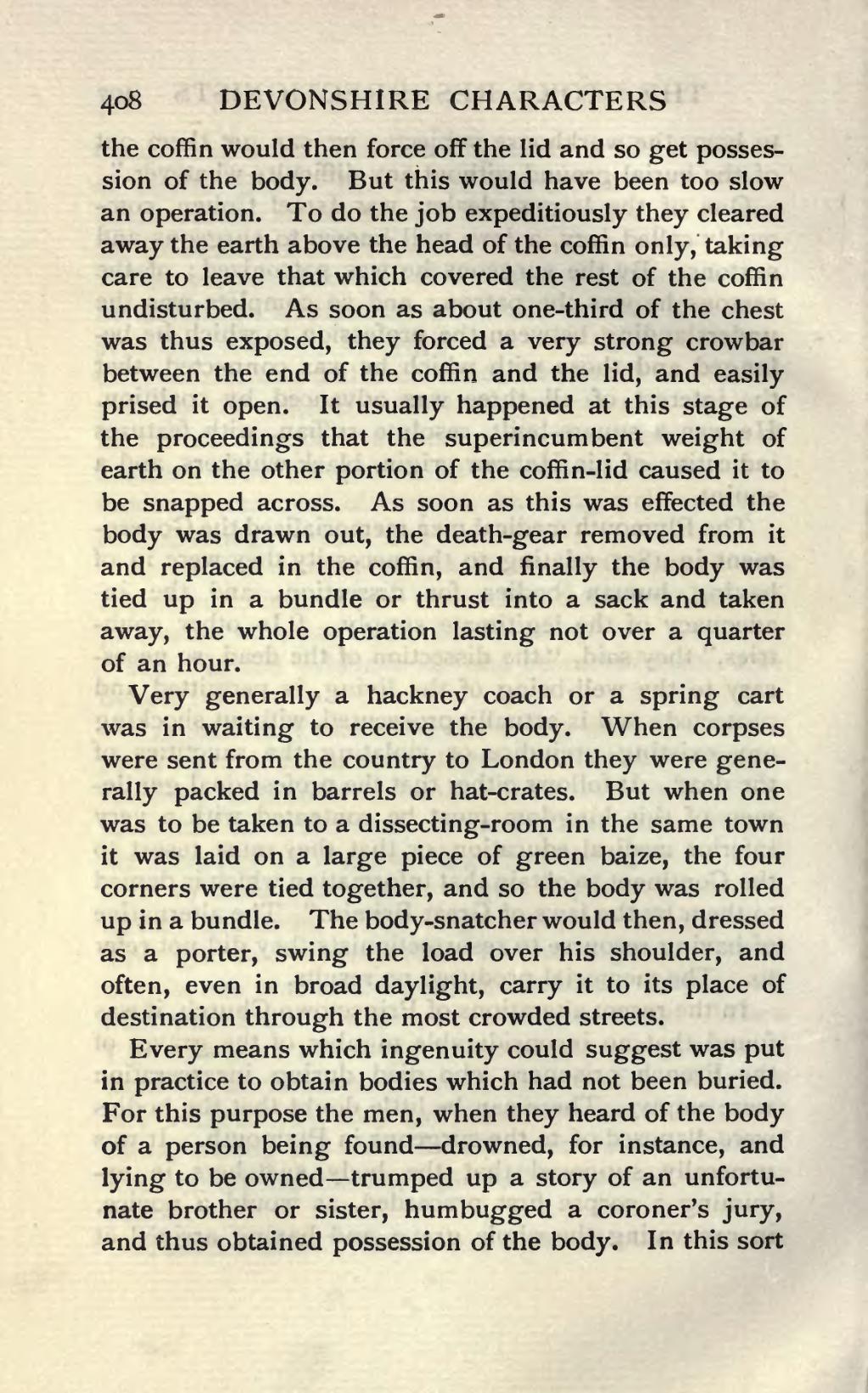the coffin would then force off the lid and so get possession of the body. But this would have been too slow an operation. To do the job expeditiously they cleared away the earth above the head of the coffin only, taking care to leave that which covered the rest of the coffin undisturbed. As soon as about one-third of the chest was thus exposed, they forced a very strong crowbar between the end of the coffin and the lid, and easily prised it open. It usually happened at this stage of the proceedings that the superincumbent weight of earth on the other portion of the coffin-lid caused it to be snapped across. As soon as this was effected the body was drawn out, the death-gear removed from it and replaced in the coffin, and finally the body was tied up in a bundle or thrust into a sack and taken away, the whole operation lasting not over a quarter of an hour.
Very generally a hackney coach or a spring cart was in waiting to receive the body. When corpses were sent from the country to London they were generally packed in barrels or hat-crates. But when one was to be taken to a dissecting-room in the same town it was laid on a large piece of green baize, the four corners were tied together, and so the body was rolled up in a bundle. The body-snatcher would then, dressed as a porter, swing the load over his shoulder, and often, even in broad daylight, carry it to its place of destination through the most crowded streets.
Every means which ingenuity could suggest was put in practice to obtain bodies which had not been buried. For this purpose the men, when they heard of the body of a person being found—drowned, for instance, and lying to be owned—trumped up a story of an unfortunate brother or sister, humbugged a coroner's jury, and thus obtained possession of the body. In this sort

